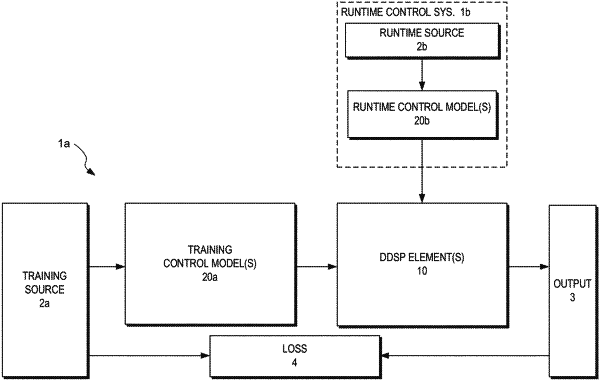| CPC G10L 19/26 (2013.01) [G06N 3/084 (2013.01); G06N 20/00 (2019.01); G10L 25/30 (2013.01)] | 20 Claims |

|
1. A computing system that combines machine learning with digital signal processors, the computing system comprising:
one or more processors; and
one or more non-transitory computer-readable media that collectively store:
one or more differentiable digital signal processors configured to receive one or more control inputs and to process the one or more control inputs to generate a digital signal output, wherein each of the one or more differentiable digital signal processors is differentiable from the digital signal output to the one or more control inputs;
a machine-learned model configured to receive a model input and to process the model input to generate the one or more control inputs for the one or more differentiable digital signal processors, wherein the machine-learned model has been trained by backpropagating a loss through the one or more differentiable digital signal processors; and
instructions that, when executed by the one or more processors, cause the computing system to perform operations, the operations comprising:
receiving the model input;
using the machine-learned model to generate the one or more control inputs based on the model input; and
using the one or more differentiable digital signal processors to generate the digital signal output based on the one or more control inputs.
|